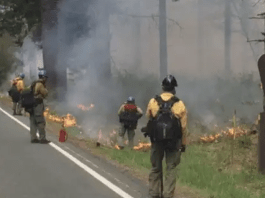It’s a snow day for a lot of people in North America today. Flights are cancelled, plans are being rearranged, and of course lots of folks are digging out. Snow is white and fluffy and cold. It’s got to be moved out of the way when it’s on the road and the driveway and in the barnyard, but it makes for a lot of fun sometimes too.

The big silver lining is when snow arrives late in winter, it’s also known as poor man’s fertilizer. Or at least that’s what we’d heard at one time, that snow was some sort of nitrogen-rich blanket that would melt away leaving its nutrient-rich bounty for the soil beneath. Then we poked around, because that’s what we tend to do when we have a question. (It’s one of the reasons you love us!) What we found was that there’s hardly any fertilizer in snow, just trace amounts of some elements, like nitrogen and sulfur. Those are mostly there because of atmospheric deposition (dropping out of the atmosphere). That deposition might help cycle those nutrients back to soils, but even if you get several feet of the white stuff, it’s still worth soil sampling when it all melts away…the most you’ll get is between 2-12 lbs of nitrogen per acre, or about half a pound for every inch of snow.
But some folks aren’t even lucky enough to get that, like Kathy who would like us to know about the absence of fertilizer in her world. Thanks, Kathy. It’s always nice to think of how warm it can be when we’re feeling lucky to see temps above zero.






I come from a long line of New England families going back to the Mayflower pilgrims in at least one branch of my family. I have heard many times from older relatives about snow being poor mans fertilizer.
My understanding is that a snowfall is considered poor mans fertilizer when it comes in the spring after the grass has started to turn green. My own observation is that when that happens the slow release of the moisture into the root zone as the snow melts is what makes the grass grow, which certainly is what happens [the grass grows] right after a late spring snowfall.
Leon Corse, The Corse Farm Dairy, Whitingham, VT
“The Home of Corse’s Contented Cows – Since 1868”
Comments are closed.